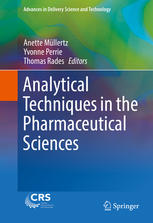

Most ebook files are in PDF format, so you can easily read them using various software such as Foxit Reader or directly on the Google Chrome browser.
Some ebook files are released by publishers in other formats such as .awz, .mobi, .epub, .fb2, etc. You may need to install specific software to read these formats on mobile/PC, such as Calibre.
Please read the tutorial at this link: https://ebookbell.com/faq
We offer FREE conversion to the popular formats you request; however, this may take some time. Therefore, right after payment, please email us, and we will try to provide the service as quickly as possible.
For some exceptional file formats or broken links (if any), please refrain from opening any disputes. Instead, email us first, and we will try to assist within a maximum of 6 hours.
EbookBell Team

4.4
102 reviewsThe aim of this book is to present a range of analytical methods that can be used in formulation design and development and focus on how these systems can be applied to understand formulation components and the dosage form these build. To effectively design and exploit drug delivery systems, the underlying characteristic of a dosage form must be understood--from the characteristics of the individual formulation components, to how they act and interact within the formulation, and finally, to how this formulation responds in different biological environments. To achieve this, there is a wide range of analytical techniques that can be adopted to understand and elucidate the mechanics of drug delivery and drug formulation. Such methods include e.g. spectroscopic analysis, diffractometric analysis, thermal investigations, surface analytical techniques, particle size analysis, rheological techniques, methods to characterize drug stability and release, and biological analysis in appropriate cell and animal models. Whilst each of these methods can encompass a full research area in their own right, formulation scientists must be able to effectively apply these methods to the delivery system they are considering.
The information in this book is designed to support researchers in their ability to fully characterize and analyze a range of delivery systems, using an appropriate selection of analytical techniques. Due to its consideration of regulatory approval, this book will also be suitable for industrial researchers both at early stage up to pre-clinical research.